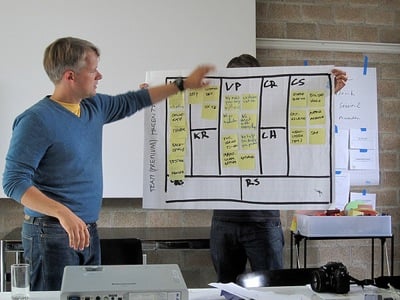
Some years ago before the Internet, business models where very simple. Typically these models where based on products and services that where paid by a buyer. However Internet and technology changed the reality and today we can find new and innovative business models that transformed markets and the way in which businesses are done.
These new business models generally have two characteristics I want to mention, among others. The first is that since day-by-day they are using more technologies and Internet services these projects require huge investments. The second is that these innovative models are not easy to specify, diagram and expose.
This situation obliges new entrepreneurs first to define very well their business models and its interactions and second to easily transmit this model to potential investors. This is the reason why they need a tool that helps them to develop these tasks.
Alexander Osterwalder and Yves Pigneur developed a tool that helps us to define, capture and transmit in an easy way our business model. This tool is called Business Model Canvas and it has been used by millions of entrepreneurs but also by famous enterprises such as GE, 3M, Deloitte, MasterCard and Ernst & Young among others. They have been using its advantages to visualize and reinvent their businesses.
The tool presents basically a canvas divided into 9 sections that we must fill out: key activities, key partners, key resources, customer relationships, customer segments, value propositions, channels, cost structure and revenue streams. Each of these segments might interrelate with the other segments.
This post is just a mouth prop to the subject of Business Model Canvas. On the next articles I will easily explain each of the canvas’ blocks and how they should be filled out in order to develop and evolve our company’s business model.
Image taken from Flickr.com
 An Entrepreneur Blog Management, Strategy, Internet, Technology, Social Networks, Organizational Change and more!
An Entrepreneur Blog Management, Strategy, Internet, Technology, Social Networks, Organizational Change and more!
